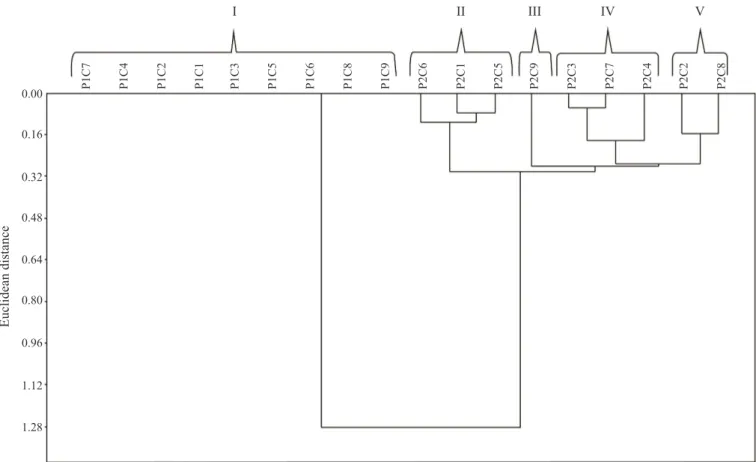Germination and tolerance of cowpea (Vigna unguiculata) cultivars to water stress
Texto
Imagem



Documentos relacionados
Silages of grain sorghum cultivars BRS 308 and BRS 310 presented lower levels of iNDF than did the forage and sweet cultivars BRS 506 and CMSXS 647 in the first crop, possibly due
Fewer leaves was recorded in plants of cultivars ‘Preta do Sul’, ‘Irará’, ‘BRS Tapioqueira’, ‘BRS Caipira’, ‘BRS Verdinha’ and ‘9783-13’, and lower canopy in
Encontrando-se dividido em cinco capítulos: (1) Introdução, breve caracterização do Estágio Profissional, do propósito e estrutura do Relatório de Estágio; (2) Dimensão
Considerando sua importante função no desenvolvimento do tecido muscular estriado, na regulação da estrutura sarcomérica, sua importante relação com as alfa-actininas e
The cultivars ‘BRS 810’ and ‘BRS Ponta Negra’ have more forage characteristics; the cultivar ‘BRS 610’ has dual purpose characteristics; and the cultivars ‘BRS 655’
Productivity and baking quality performance of wheat cultivars (A, BRS 179; B, BRS Guabiju; C, BRS Guamirim; D, BRS Umbu; E, CD 105; F, CD 115; and G, Safira) with different
ABSTRACT: Five Zea mays cultivars (BRS Caatingueiro, BRS Gorutuba, BRS Sertanejo, BRS Asa Branca and BR 106) were evaluated considering their effect on the nutrition of the maize
This paper describes the development of cotton cultivars BRS 430 B2RF and BRS 432 B2RF as part of an ongoing effort to create new cotton lines and cultivars with improved